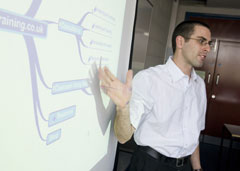Using Concept Mapping Software to raise student grades

Concept mapping is a method of representing information visually with connections between the different pieces of information highlighted. Mapping information out visually in this manner, has been proven to raise learner grades, and can be especially beneficial for learners that have dyslexia.
When Dave Foord started using these principles in his teaching, he observed an obvious improvement in the standard of the students work, and their associated grades in assessments. Dave has also worked with a college that used concept mapping principles to help raise the grades of students that were identified as being 'at-risk' of failing the courses.
Concept mapping has many uses in education including: revision, planning, problem solving, presenting information, and project management.
With the current shift in schools from coursework to exams, effective revision techniques is essential for learners. Using these principles will also help an organisation to meet their duty to the equality act 2010.
This session can be run with a variety of software, depending on what is available, including paid, free, or web-based options.
The session will cover:
- The basic functions of the software.
- The principle and process of brainstorming.
- Converting a brainstorm into a concept map.
- Using a concept map as a revision aid for exams.
- Using a concept map to plan a piece of work.
- Different ways of using the software as a teaching and learning tool.
- Sectors: Nursery/Primary, Secondary, FE, HE.
- Session Duration: Short, Half day or Full day.
- Target audience: Teaching, Senior managers, Classroom support, Learning Technologists.
